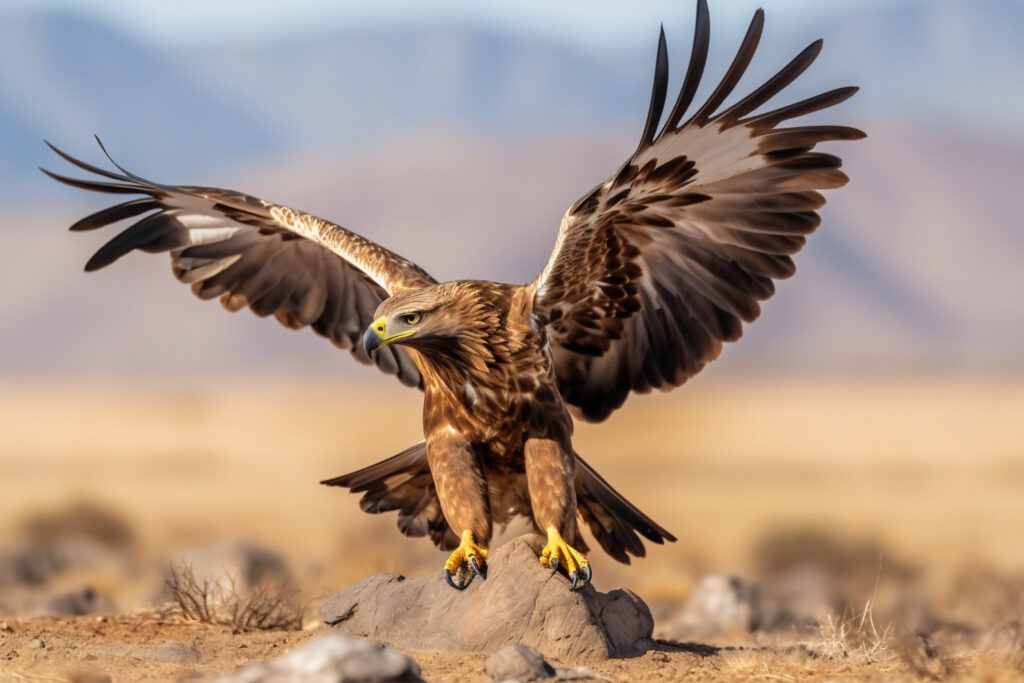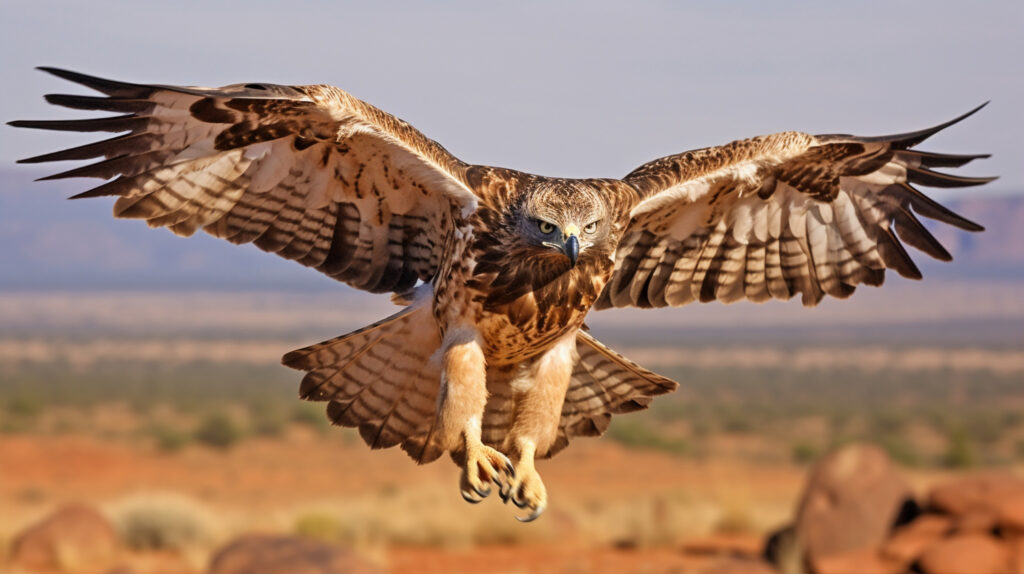The Golden Eagle is a bird that captures the imagination. With its powerful wings, sharp eyes, and regal presence, it commands the skies like few other creatures can. But beyond what we see from afar soaring above cliffs or gliding through valleys—there’s a remarkable story waiting to be discovered. From its ancient symbolism to its surprising hunting skills, the Golden Eagle has earned its place as one of nature’s most extraordinary birds of prey.
Where Can You Find the Golden Eagle?
The Golden Eagle has one of the widest ranges of any eagle species, found across the Northern Hemisphere. You can spot them in:
- North America – from Alaska and Canada down through the western United States
- Europe – especially in Scotland, Norway, and the Alps
- Asia – throughout Mongolia, Russia, and Central Asia
- North Africa – in remote mountain areas
They prefer rugged, open landscapes—think mountains, plateaus, and wide valleys. In the UK, the Scottish Highlands remain their stronghold, with dedicated efforts to protect their habitat and encourage population growth.
What Makes the Golden Eagle Stand Out?
The Golden Eagle is not only large, but striking in its appearance. Adults have rich brown feathers with golden tones on the back of the neck—a feature that gives them their name.
- Wingspan: Can reach over 7 feet
- Weight: Between 3 and 6.5 kg
- Eyes: Deep golden or amber with remarkable vision
- Beak: Hooked, sharp, and strong
- Legs: Covered in feathers down to the feet, unlike many other eagles
Young eagles are marked by white spots on their wings and tail, which fade as they mature.
How Does the Golden Eagle Hunt?
Watching a Golden Eagle hunt is an incredible experience. These birds have the ability to see prey from more than a mile away, then swoop down in a silent, lightning-fast dive.
They feed on:
- Rabbits and hares
- Ground birds like grouse and pheasants
- Marmots and squirrels
- Occasionally foxes or young deer
- Carrion when fresh prey is scarce
They’re capable of lifting prey weighing up to 5 kilograms—thanks to their strong talons and muscular build. In some places, they even hunt cooperatively, especially when targeting larger animals.
The Life of a Golden Eagle Pair
These eagles are loyal to their partners, often remaining together for life. Their courtship involves impressive aerial displays—swooping, diving, and flying in synchrony.
- Nesting starts in late winter or early spring
- They lay 1 to 3 eggs, but often only one chick survives due to limited food
- Nests are built high on cliffs or in tall trees and are reused every year, growing larger over time
Watching a pair of Golden Eagles raise their young is a mix of beauty and intensity. Only the strongest chick usually makes it—nature’s way of ensuring survival in harsh environments.
Surprising Facts About the Golden Eagle
- It can dive at speeds over 200 mph
- Its grip strength is powerful enough to crush bone
- Mongolian falconers train Golden Eagles to hunt wolves and foxes
- In the wild, they live around 30 years; some live even longer in captivity
- They’ve been seen gliding for hours without flapping their wings
The Golden Eagle is more than just a powerful hunter. It’s a highly intelligent and adaptable bird, capable of surviving in some of the world’s toughest climates.
Culture and Symbolism
Why the Golden Eagle Has Always Been Respected
Across history and cultures, the Golden Eagle has symbolised power, nobility, and freedom.
- In Rome, it was the emblem of the empire’s military strength
- In Greece, it was considered the messenger of Zeus
- In Native American traditions, it represents spiritual guidance
- In Kazakhstan and Mongolia, it’s a partner in traditional falconry
- On the Mexican flag, an eagle eating a snake is believed to represent the Golden Eagle
This bird’s reputation isn’t just about size or speed—it’s about the awe it inspires in people who share its skies.

Understanding the Threats to the Golden Eagle
The Golden Eagle is not officially endangered, but that doesn’t mean it’s safe. There are still serious threats to its survival.
- Loss of habitat due to farming, deforestation, and development
- Illegal killing by people who view them as threats to livestock
- Electrocution from power lines
- Collisions with wind turbines
- Poisoning from lead or rodenticides left in carrion
In places like the UK, efforts are underway to protect these birds through education, tracking programmes, and the enforcement of wildlife laws.
Spotting a Golden Eagle in the Wild
Birdwatchers often dream of seeing a Golden Eagle up close. These birds are shy, so spotting one takes patience and a bit of luck.
Best spots include:
- Isle of Mull and Cairngorms National Park in Scotland
- Alaska’s Denali National Park
- Altai Mountains in Mongolia
Go early in the day, bring good binoculars or a long lens, and scan the sky for a large bird soaring in wide circles. Their distinctive wing shape and slow, graceful movements are key clues.
Learning From the Golden Eagle
Golden Eagles are not just fascinating creatures—they’re also valuable teaching tools. Studying them helps us understand predator-prey relationships, how animals adapt to changing climates, and why biodiversity matters.
They’re also powerful examples of the link between wildlife and culture—how animals shape our stories, beliefs, and symbols over time.
If you’re a teacher, a student, or a parent looking to explore nature with your children, the Golden Eagle offers endless lessons.
How They Compare to Other Eagles
| Feature | Golden Eagle | Bald Eagle | Harpy Eagle |
| Diet | Mammals and birds | Fish and carrion | Tree-dwelling mammals |
| Habitat | Mountains, hills | Rivers and lakes | Tropical rainforests |
| Wingspan | Up to 7.5 feet | Similar | Shorter but bulkier |
| Temperament | Fierce and solitary | Opportunistic scavenger | Territorial and elusive |
The Golden Eagle stands out not just for where it lives or what it eats, but for how it blends raw power with quiet elegance.
Conclusion:
Few birds leave a mark like the Golden Eagle. With its broad wings, piercing stare, and silent flight, it has inspired awe for centuries. But it’s not just its looks or legend that matter—it’s the role it plays in nature, and the lessons it teaches us about strength, adaptability, and balance.
If you ever get the chance to see one in the wild, take a moment to simply watch. You might find that the real secret of the Golden Eagle is how it makes you feel: small, humbled, and completely amazed.







